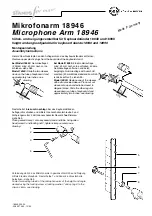
DSC Q Series Getting Started Guide
28
Instrument Specifications
The tables found on the following pages contain the technical specifications for the DSC. The specifications
apply to all models, except where noted.
DSC Instrument Characteristics
Dimensions
Depth 56 cm (22 in.)
(Q2000, Q200, Q1000 & Q100)
Width 46 cm (18 in.)
Height 48 cm (19 in.)
Dimensions (Auto Q20/Q20/Q10)
Depth 56 cm (22 in.)
Width 46 cm (18 in.)
Height 41 cm (16 in.)
Weight (without Autosampler)
25 kg (54 lbs)
Weight (with Autosampler)
29 kg (65 lbs)
Weight of cell alone
1.6 kg (3.5 lbs)
Weight of Autosampler alone
4.5 kg (10 lbs)
Weight of transformer
8.6 kg (19 lbs)
Power
120 Vac, 47–63 Hz, 500 W (4.5 amps) standard
230 Vac, 47–63 Hz, 500 W (2.25 amps) if configured with a voltage
configuration unit
Accessory Outlets
Power: 120 V, 47–63 Hz, 400 W each
Compatible accessories: LNCS, DPC
Operating Environment
Temperature: 15–30 °C
Conditions
Relative Humidity: 5–80 % (non-condensing)
Installation Category II
Pollution Degree 2
Maximum Altitude: 2000 m
Temperature Range:
with FACS
Room temperature to 725
o
C*
with Quench Cooler
-180
o
C to 550 °C**
with RCS 90
-90 to 550 °C
with RCS 40
-40 to 400 °C
with LNCS
-180 to 550 °C
* You must use an inert atmosphere above 600
o
C.
** Helium purge gas must be used for temperatures below –100 °C
(table continued)
















































